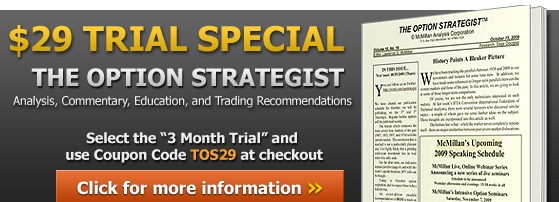Ends Jan 8, 2026.

By Lawrence G. McMillan
When one says that “the market” is overbought, he really means that a number of trusted indicators are in extreme states of bullishness. Recognizing that “the market” is overbought is only moderately useful. That’s because an overbought market can still rise strongly, while remaining overbought. Things work similarly, but in reverse, for oversold markets. In fact, some of the worst declines in history (most of October, 2008, for example) came when the market was already oversold. Eventually, though, the market reverses and works off the extreme conditions.
In today’s article, we’ll identify the current overbought conditions and then make a recommendation as to how best trade them.
Trading Market Extremes
Overbought or oversold markets can be more dangerous than “normal” markets to short-term traders. For example, if one were to short the market once he identified it as overbought, he might be standing in front of the proverbial “freight train” as the market races higher, making his short position very painful. It is not uncommon to see certain advisory services get caught in this trap. It can be even worse on the downside. In the last great bear market of 2007-2009, there were some bulls who are not “perma-bulls,” but even so, they never turned bearish. That’s because the market got oversold right away, and to some it seemed like it was better to wait for a buy signal or to trade from the long side. They were wiped out (well, paper accounts are never really wiped out, are they?) as the market continued to plunge.
For these reasons, we prefer to wait until an overbought condition reverses and breaks its trend before taking a position. Regular subscribers are familiar with this approach in the way we treat put-call ratio signals, for example...
Read the entire Getting Very Overbought, Again article (to be published 7/26/13) by subscribing to The Option Strategist Newsletter.
© 2023 The Option Strategist | McMillan Analysis Corporation

